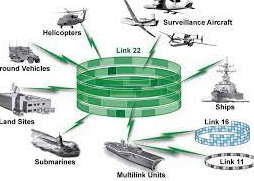In the intricate web of modern warfare, communication and information-sharing are paramount for success on the battlefield. Enter Tactical Data Links (TDL), a vital component in the arsenal of military communication technologies. This blog post aims to unravel the significance of Tactical Data Links, exploring their functionalities, applications, and the crucial role they play in enhancing situational awareness and coordination in military operations.
Understanding Tactical Data Links:
Tactical Data Links, often referred to as TDL, are communication systems designed to facilitate the exchange of tactical information between various platforms, such as aircraft, ships, ground vehicles, and command centers. These links create a network that enables real-time transmission of critical data, including sensor information, targeting data, and situational awareness updates. TDLs serve as the digital backbone of modern military operations, enhancing interoperability and coordination among different units and branches.
Key Features of Tactical Data Links:
Interoperability: Tactical Data Links are engineered to ensure interoperability between different military platforms. This means that aircraft, ground forces, and naval vessels equipped with compatible TDLs can seamlessly share and receive information, fostering a more connected and cohesive fighting force.
Real-time Data Transmission: The hallmark of TDLs is their ability to transmit data in real-time. This rapid exchange of information is crucial for timely decision-making on the battlefield, allowing commanders to respond swiftly to dynamic situations and emerging threats.
Secure Communication: Security is a paramount concern in military operations, and TDLs are designed with robust encryption and authentication measures to ensure secure communication. This feature protects sensitive data from falling into the wrong hands and safeguards the integrity of military operations.
Multi-Domain Integration: In the modern era of warfare, operations often span across multiple domains, including air, land, sea, space, and cyberspace. TDLs are engineered to support multi-domain integration, enabling communication and coordination across diverse military environments.
Applications of Tactical Data Links:
Air Operations: TDLs are extensively used in air operations to facilitate communication between aircraft, both within the same fleet and across different platforms. This includes the exchange of target data, threat assessments, and overall situational awareness.
Naval Warfare: In naval warfare, TDLs connect ships, submarines, and aircraft to create a comprehensive maritime network. This network allows for coordinated anti-submarine warfare, air defense, and other naval operations.
Ground Forces: Tactical Data Links enhance communication among ground forces, providing commanders with real-time information on the location of friendly and enemy units. This is critical for effective maneuvering and decision-making in land-based military operations.
Joint Operations: TDLs play a pivotal role in joint military operations, enabling seamless communication and coordination between different branches of the military. This ensures that the Army, Navy, Air Force, and other units can work together efficiently to achieve common objectives.
Conclusion:
As military operations become increasingly complex and technologically advanced, Tactical Data Links emerge as a linchpin in the communication infrastructure of modern armed forces. The ability to exchange critical data in real-time, ensure interoperability, and support multi-domain integration makes TDLs indispensable for maintaining a strategic edge on the battlefield. In an era where information is power, Tactical Data Links stand as a testament to the relentless pursuit of enhanced communication and coordination in the pursuit of global security and defense.


